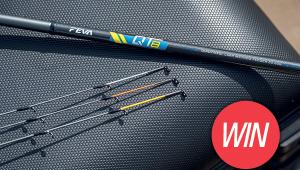Wind Beater
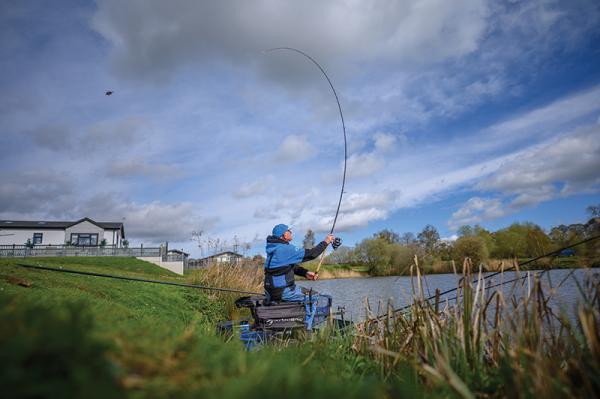
In every aspect of angling, accuracy is one of the most critical factors, which can determine how well you catch. In feeder fishing, it is most certainly the situation. When the only way you can introduce bait into the swim is via a feeder it really focuses your thoughts and concentration on the most effective ways to do it. It’s no coincidence that the anglers who do this the best are the most consistent feeder anglers around.
There are many different factors that you must consider when you are trying to be more accurate, and when faced with adverse weather conditions it makes these factors even more important.
I have come to Hallcroft Fishery in Retford, where there are some huge carp in all the lakes, as well as plenty of other carp, bream, and skimmers. I love fishing here as most of the lakes are a good size, and in the feeder only matches I fish such as Golden Rod and Feeder Masters here, you always have plenty of space, and usually have an island to cast to. 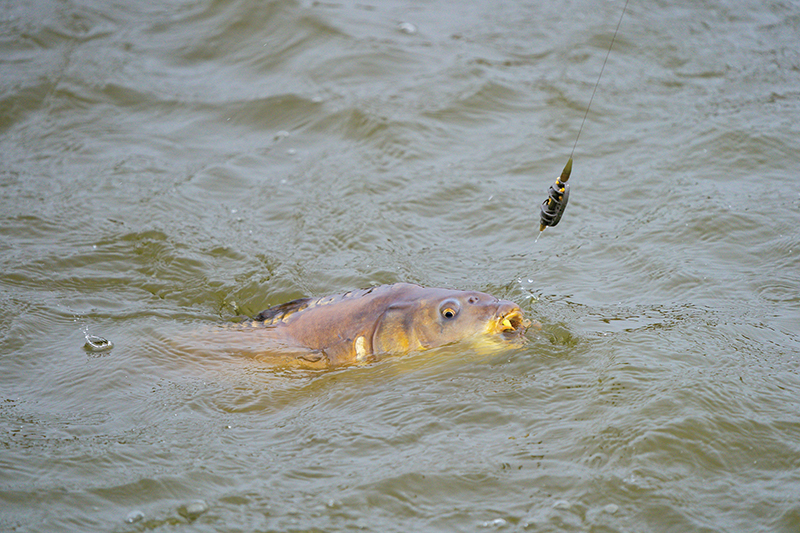 The big fish are clever and not always easy to catch, but with a bit of thought and stealth you can usually catch some. There are plenty of areas in your swim where you will catch them, but they will often push away from the noise and vibrations of anglers at the start, and for this reason the far bank swims on the islands become very important. These are big open lakes and can often have strong winds on them and today is a classic example with a horrendous side wind. It’s a great day to demonstrate the thoughts and considerations that go through my mind when confronted with these conditions.
The big fish are clever and not always easy to catch, but with a bit of thought and stealth you can usually catch some. There are plenty of areas in your swim where you will catch them, but they will often push away from the noise and vibrations of anglers at the start, and for this reason the far bank swims on the islands become very important. These are big open lakes and can often have strong winds on them and today is a classic example with a horrendous side wind. It’s a great day to demonstrate the thoughts and considerations that go through my mind when confronted with these conditions.
Geared Up
It is really important to have the right gear to tackle these situations. On calm days it is easy to accurately cast to the island with a light/medium power rod and 6 or 8lb line but in winds like today it will compromise your accuracy. I have set up a couple of 12ft Garbolino Essential Distance Feeder rods. These have progressive rather than parabolic actions and this dramatically improves accuracy in adverse weather or if you are going longer distances. I also have a big pit style reel, which helps release line so much quicker than a smaller standard spool design reel. The rods’ progressive power helps me punch the feeder out in strong winds and I can still feather the cast as the feeder hits the water. If I have the correct size feeder on I should be able to keep a straight, tight line to the feeder on the cast and be extremely accurate.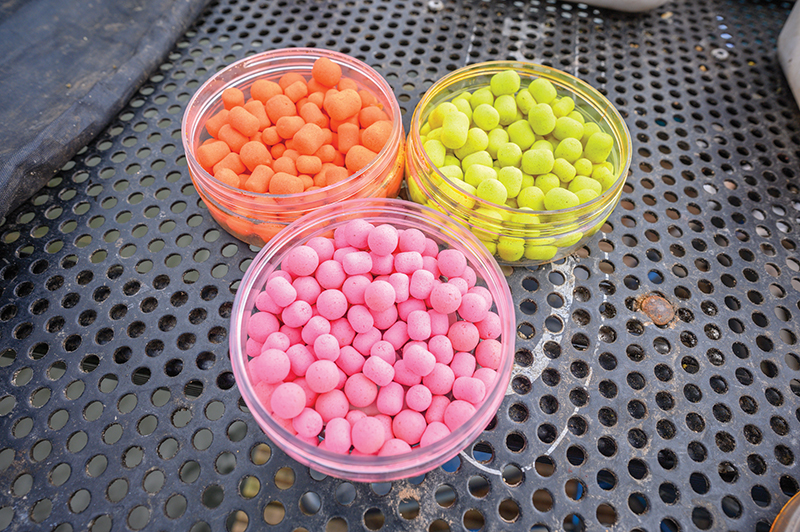
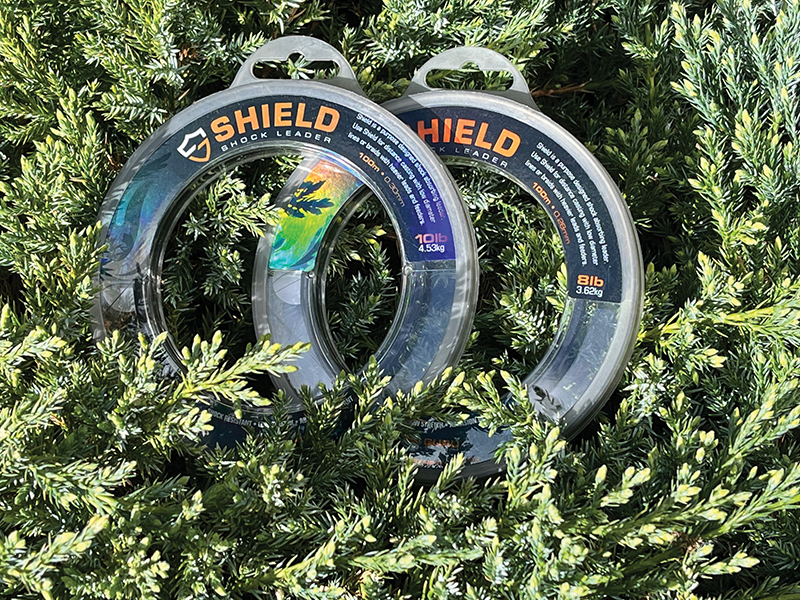 Line Decisions
Line Decisions
For most of my carp feeder fishing on open waters I automatically opt for a 7m shock leader in 8lb or 10lb. I will use a 6lb main line with this, which gives me the best setup for accurate casting. I can cast any size feeder off the shockleader without fear of cracking off on the cast. This way I can put power into every cast to cut through the wind, and then slow it and feather it into the water extremely accurately. The 6lb main line does not create as much drag as using a full 8lb main line straight through. It also means that I can play and land the fish at the net with the full strength of my shockleader as the knot sits on the spool as I land a fish.
This is my ideal setup for a lot of my mid to long distance feeder fishing. However, there are situations where I may need more power. A 6lb main line has more stretch than 8lb, so if I am fishing close to snags, reeds or situations where I need to keep a hooked fish under control very quickly, I will use a direct 8lb main line rather than the shocker. This may create problems on the cast in bad winds as a bow can quickly form during the cast reducing the distance and accuracy at times, but by using a heavier feeder I can counter this drag problem to a certain extent. 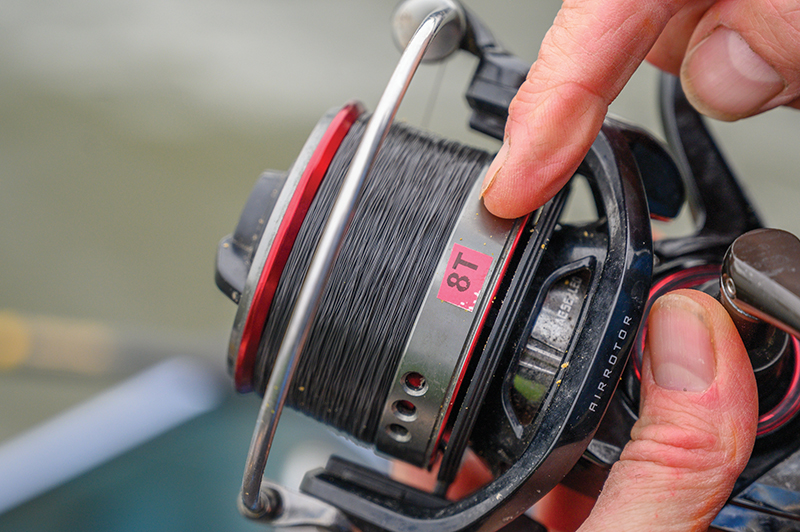 Today I have set up both options to see how differently they work. The other advantage of fishing 8lb direct is that you can be more accurate when you have to fish a big feeder tight to a feature. Because there is less stretch it means you can rely totally on your clip rather than having to compensate for the stretch in the line too. The 8lb direct rod is absolutely on the limit today with such bad gusts, and the shockleader rod is working really well. The line settles better under the water quickly with less of a bow, which was important as I have had some bites within seconds of the feeder landing today.
Today I have set up both options to see how differently they work. The other advantage of fishing 8lb direct is that you can be more accurate when you have to fish a big feeder tight to a feature. Because there is less stretch it means you can rely totally on your clip rather than having to compensate for the stretch in the line too. The 8lb direct rod is absolutely on the limit today with such bad gusts, and the shockleader rod is working really well. The line settles better under the water quickly with less of a bow, which was important as I have had some bites within seconds of the feeder landing today.
Feeder Choice
Feeder size will depend on how much bait you want to introduce into your swim. I often start on a slightly bigger feeder in spring and then drop down to a smaller version. Weight choice is the important thing in windy conditions. Too light a feeder and you will not maintain the accuracy, but as always we want to fish as light a feeder as we can get away with to cause less disturbance. The key point to remember is if you cannot get to where you need to be every time then you will catch fewer fish as you will be spreading bait and fish everywhere. Today I have needed at least 40g to achieve consistent accuracy casting tight to the platform leg. A bigger feeder was also better but I had to drop down a size now and again to reduce the feed. Also putting less micros on the bigger feeder worked better as it was more streamlined.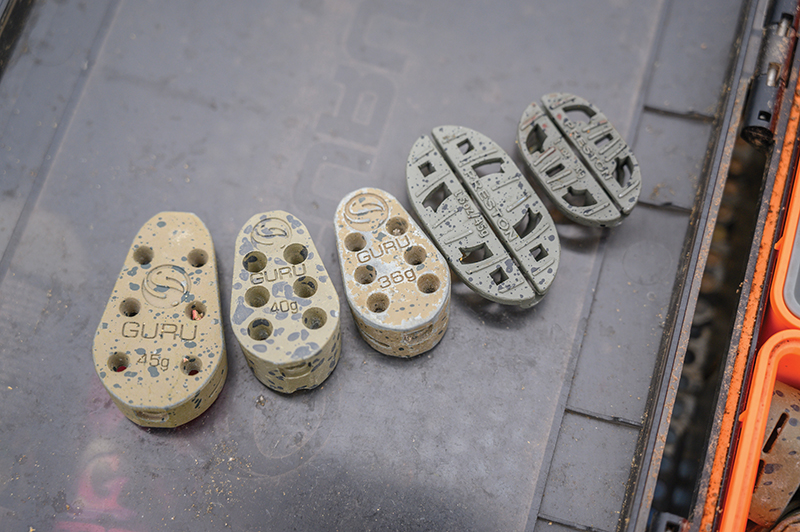
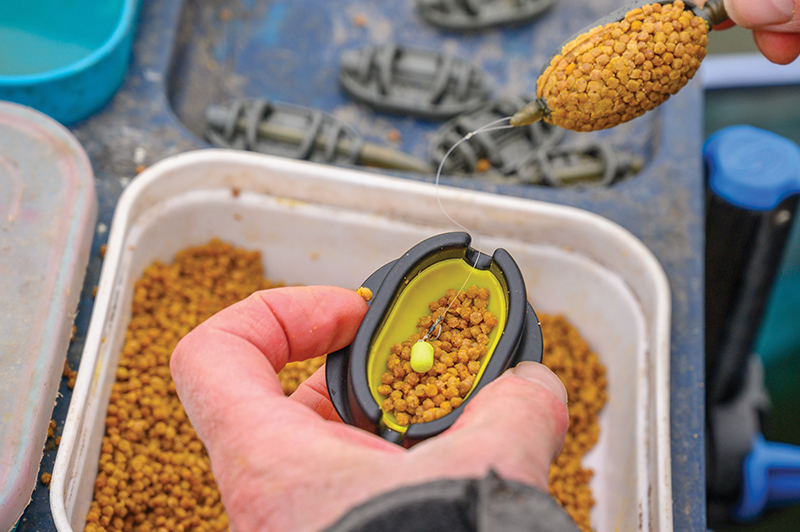 Hallcroft has an ‘in-line’ free running rule on feeders and bombs, and this suits this style of fishing as I am tight to platform legs and often reeds. This gives me more direct control on a hooked fish, which is very important as there is always a fair amount of stretch in the line to pick up on. It’s not always the big fish that cause you the problems in these situations, smaller carp and F1s (where applicable) can be a nightmare for finding snags at distance. I do like elasticated X-Safe stems where they are allowed, especially in open water, but the in-line option is best in these situations.
Hallcroft has an ‘in-line’ free running rule on feeders and bombs, and this suits this style of fishing as I am tight to platform legs and often reeds. This gives me more direct control on a hooked fish, which is very important as there is always a fair amount of stretch in the line to pick up on. It’s not always the big fish that cause you the problems in these situations, smaller carp and F1s (where applicable) can be a nightmare for finding snags at distance. I do like elasticated X-Safe stems where they are allowed, especially in open water, but the in-line option is best in these situations.
Essential Sticks
In situations like this it is essential to use measuring sticks for getting the correct distance. I cast a 42g bomb to the correct spot, then fix my line clip. I then measure this distance with my sticks and can do all my other rods with the sticks. This means I only need to cast the bomb in one or two times. I do this as soon as I set up my rods so the swim has time to settle, and hopefully before others around me.
If I have any mishaps throughout the session I know I am fishing at 46 metres, so I can quickly set up and measure out again with my sticks without having to cast into the swim several times and potentially disturb the swim. 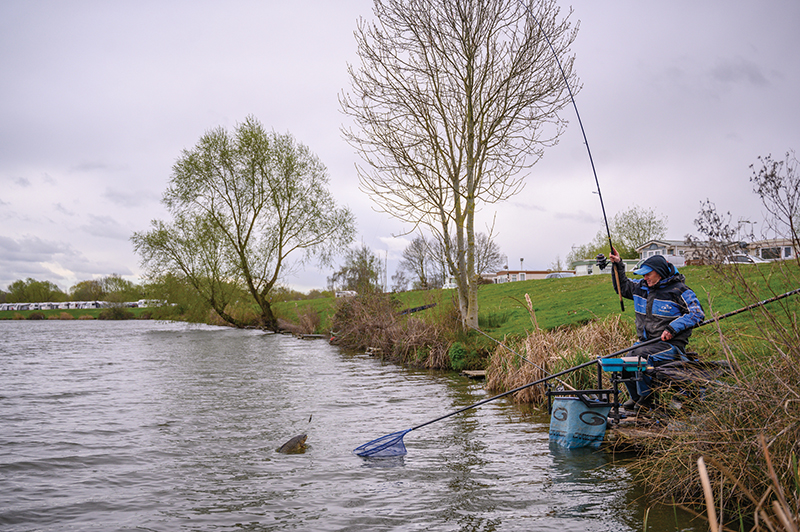 Practice Makes Perfect
Practice Makes Perfect
There is no substitute for casting practice. The problem with fishing a match is that you don’t really practise your casting. It’s much better to have an hour just casting if you have the time. This way you can try different setups, feeder weights and techniques. This is the only way to improve quickly. I will often have an extra 30 casts after a session just to brush up on my technique, especially if I know I’m going to be fishing like that soon. This really helps your casting.
One last comment, you must be confident in the gear you are using. Rods are designed to be strong enough to cast with power so don’t hold back! If you need to push hard then do it and your gear will respond well. You don’t see a golfer holding back on his swing when he has a big drive.
The Session
Today has been the perfect practice session. The wind was horrendous but it was a great challenge, and by balancing my gear well I was able to accurately hit the spot most times. The best hook bait was a Mainline 6mm yellow pineapple wafter, and I added a bit of Yellow Scopex Mainline match dye to some of the fishery micros to give them an edge. The fish came in bursts of two to three at a time, then they backed off, regrouped and came back to me as long as I was patient and didn’t go too mad with the feed. I could tell through the liners if I was feeding too much as I stopped getting proper bites. Then it was a case of putting a smaller feeder on or just skinning the larger feeder. This brought the proper bites back and I started catching again.
The old adage of practice makes perfect is totally the case with this style of fishing, so if you want to get better at it make sure you get out on the bank and put the time in to get better. You will be amazed at how your catch rate improves.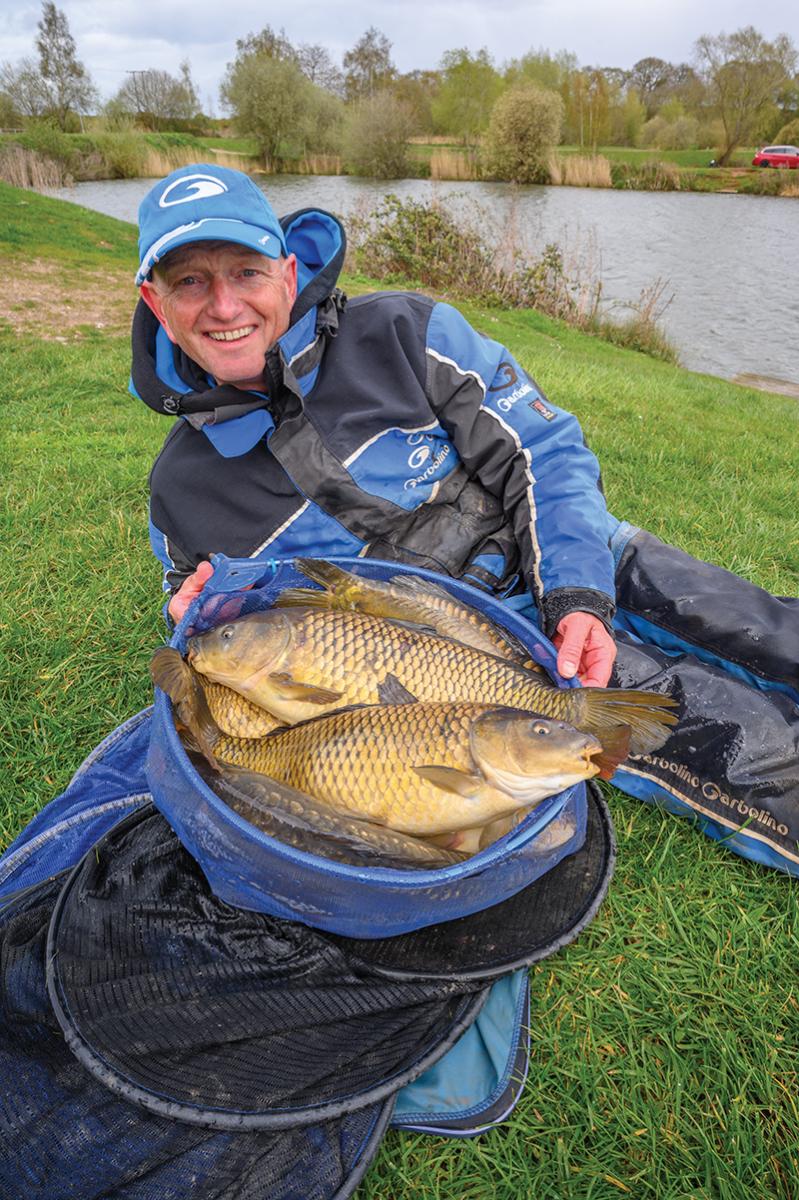
- Log in or register to post comments










